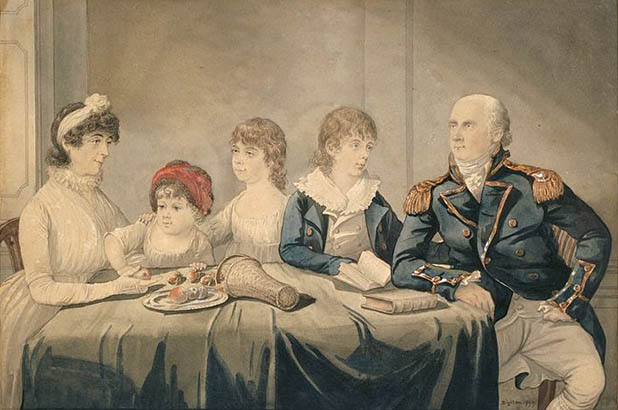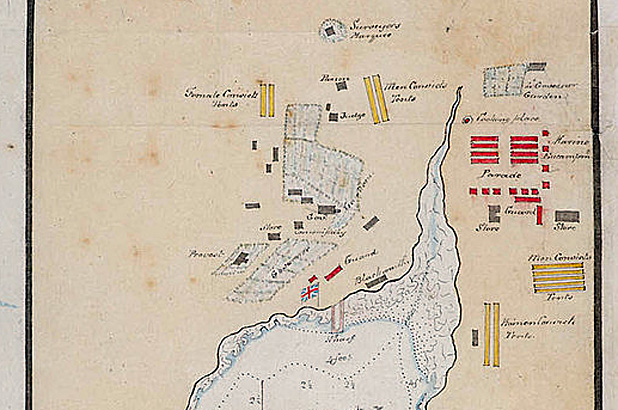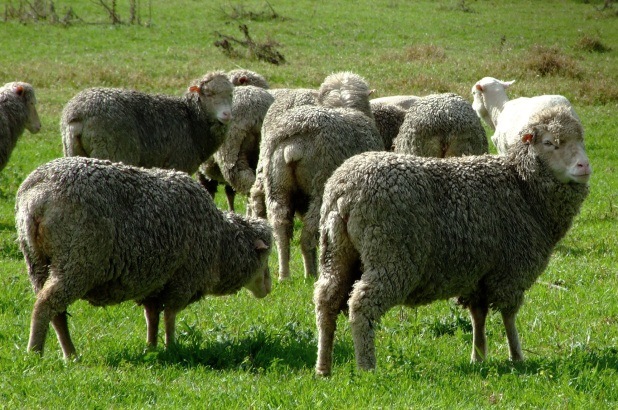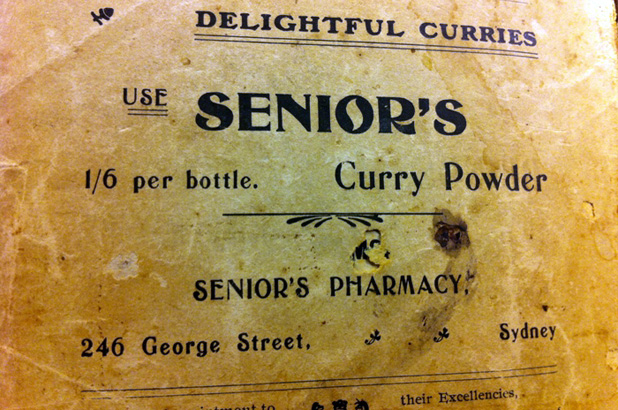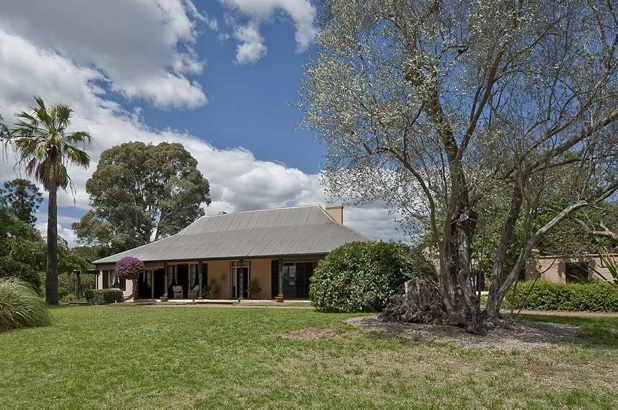The ‘cash grocer’ on the corner of Susannah Place at 64 Gloucester Street was serving local customers for over 90 years. During this time there were 12 shopkeepers who lived onsite with their families. Continue reading
Posts in the category: Stories
The Governor’s table
[Philip Gidley and Anna Josepha King, and their children Elizabeth, Anna Maria and Phillip Parker], Robert Dighton, 1799. Mitchell Library, State Library of NSW: ML 1244
Today’s post is brought to you by our guest blogger, HHT Historian, Jane Kelso whose exhaustive research on first Government House includes a fascination with the various Governors’ dining practices – and their guests! Continue reading
Escapee tea
Leaves from Botany Bay used as tea, ca 1791. Mitchell Library, State Library of New South Wales: R807
By 1788 the taking of tea, that very British ritual, was enjoyed universally, even in the poorest households. Although tea was available for sale in Sydney from at least 1792, it was not yet considered a ‘necessary’ and therefore not included in convicts rations for another 30 years. But rather than going without, the early colonists found their own alternative in a native sarsaparilla – testament to their resourcefulness. Continue reading
Food and fetters
Sydney Cove, Port Jackson. The position of the encampment & buildings are as they stood at March 1788 (detail), William Bradley. Mitchell Library, State Library of NSW: Safe 1/14
Early Sydney operated surprisingly freely. It was effectively a jail without walls where, rather than being imprisoned, the convicts were the general population, living as a community in tents at first, then in huts and cottages that they built themselves. Continue reading
First Fleet fare
Governor's House at Sydney, Port Jackson 1791 by William Bradley. State Library of NSW Safe 1/14
Most First Fleet or early settlement histories concentrate on rations and the eventual lack thereof when talking about food in the early years of the colony. But as a gastronomer, and for the purposes of this blog, I am curious about what the colonists did with their rations? In other words, what did they actually eat? Continue reading
Advance Australian fare
Mutton illustrated in Eliza Acton, Modern cookery for private families, Southover Press, Lewes, 1993 (1st ed.1845), p207. Caroline Simpson Library & Research Collection, Historic Houses Trust
Lambast – the Cook’s call to [our coat of] arms!
Riding on the sheep’s back
Merino sheep at the Elizabeth Macarthur Agricultural Institute. Photo Scott Hill © HHT
If there’s one thing people think of when they hear the name ‘Macarthur’, it’s sheep! Continue reading
Curry chemist-ry
Advertisement for Senior's curry powder in Hannah Maclurcan, Mrs Maclurcan’s cookery cook, George Robertson & Co, Melbourne, c1905. Rouse Hill House & Farm Collection
This advertisement was published in Mrs Maclurcan’s Cookery Book c1905. The book contains several curry recipes, including Mulligatawny soup and curiously but possibly delicious, Curried Green Bananas. Continue reading
At the Macarthurs’ table
The Elizabeth Farm dining table set for breakfast (detail). Photo © Paolo Busato
While we don’t routinely set the table at Elizabeth Farm, when we do we draw on a wide range of primary sources that describe the Macarthurs’ daily lives as well as wider, but still closely related, colonial themes. Continue reading
The vine and the olive
Elizabeth Farm (detail). Photo © Christopher Shain
In 1831, when Thomas Mitchell set off on his Journey into the Interior, he started the account metaphorically at Elizabeth Farm, in ‘A Garden’. The description of Macarthur’s estate served both as a symbolic starting point for his journey into the unknown, and also as a contrast to what he would describe as he journeyed into ‘the wilds’, leaving first the elegant houses, the gardens, the fields and, finally, even the scattered sheep-herds of the colony behind.
